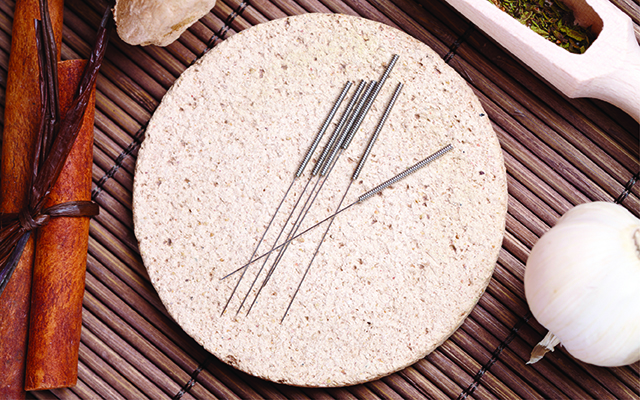I was sitting in my acupuncturist’s office the other day, going through the results of the latest lab test handed down to me by my doctor. These were not pretty, as you may recall: hypertension, marginal metabolic syndrome, etc. Dr. Needle, however, took a different view, pointing to all the positives — low triglycerides, high levels of “good” cholesterol — even as she lamented conventional medicine’s obsession with numbers and fear.
An hour later, after she’d led me through my first session of Nutrition Response Testing, we sat down to discuss her findings. I was in pretty good shape, she reported, noting that I had no discernible food sensitivities, my adrenals were functioning normally, and my immune system seemed to be in top form. Like most people, she explained, my liver needed some help cleaning all the environmental toxins out of my system. She sent me home with three small bottles of supplements and suggested I return in a couple of weeks to see how they worked.
No warnings, no admonitions, no sense of impending doom.
I’m not alone in criticizing the fear-based medicine practiced by even some of the most progressive Western doctors. An editorial published last fall in the British Journal of Sports Medicine, argued that so many patients have been classified as “high risk” of developing a debilitating illness that the diagnosis itself has become a disease. In other words, doctors are “turning the healthy into sick.”
The author, Teppo Järvinen, a professor in the Department of Orthopedics and Trauma at Helsinki University Hospital in Finland, asserted that this trend is undermining preventive medicine and hindering attempts by patients to take charge of their own health.
Järvinen cites a few examples of this trend and its consequences:
- European guidelines increased the threshold for treatment of high blood pressure to such an extent that the majority of adult Norwegians — often considered one of the healthiest populations in the world — are now classified as high risk.
- The U.S. National Osteoporosis Foundation guidelines now suggest drug treatment for anyone whose 10-year probability of suffering a hip fracture is a mere 3 percent. This would theoretically include 75 percent of white women over the age of 65 and more than 90 percent of those over 75.
- The new cholesterol guidelines, he says, “colonize virtually the entire elderly population in the realm of the sick.”
Most patients don’t want to resort to any treatment protocol that doesn’t reduce the risk of the disease by 20 to 50 percent, Järvinen noted. But doctors are much more likely to push for treatment when the impact is much smaller. He pointed to osteoporosis treatment as an example, noting that doctors “began prescribing enthusiastically when an osteoporosis drug was shown to increase the probability of avoiding a hip fracture from 97.9 percent to 98.9 percent.”
I’ll admit that part of this problem can be attributed to patients who don’t want to leave their doctor’s office without some kind of solution to their particular problem. And it doesn’t help that Western medicine has so few tools to deal with chronic disease — that’s why we have a pharmaceutical industry. As Järvinen puts it, “Without accurate and common comprehension of these key aspects, there is no basis for shared decisions. And without shared decision-making, pharmacological primary intervention becomes a tyranny of eminence.”
I, for one, don’t want to live in Järvinen’s “realm of the sick,” a territory ruled by Big Pharma. Which is why I cancelled my upcoming follow-up appointments with my conventional doctor and scheduled regular visits with my acupuncturist. I still need to take care of myself, but I’ll do it now with a sense of possibilities rather than a sense of doom.



This Post Has 0 Comments